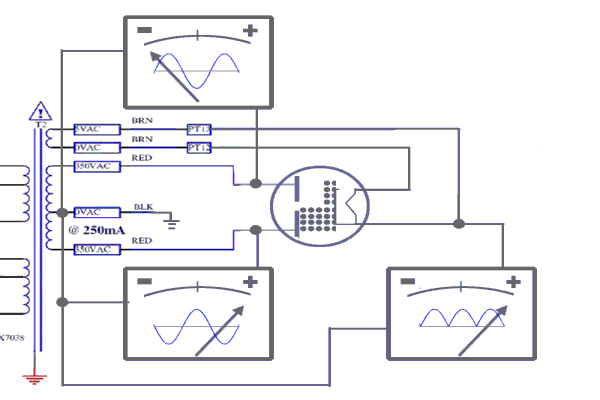I'm trying to get my head around tube amp design and operation. I was making good progerss in my studies this morning until I started looking at the PS. The rectifier in particular.
I understand the concept of a diode tube, and how electrons only flow from cathode to anode. That the AC supply off either end of the center tapped seconday PT is out of phase with the other end and the rectifier only conducts on the positive side of the sign wave. Filter caps fill in the gaps but for a bit of ripple that is handled by the choke.
My big question is what exactly is going on in the tube. From this schematic, I see that 5 VAC is going to the heater and the HT is connected to each of the plates. But I aslo notice that the resulting DC output is connected to the 5 VAC line. How is it possible that these 2 are on the same "buss"? Is it because the output of the tube is only the positive side of an AC voltage and is only considered DC when in a circuit that connects it to ground?
And, if electrons only flow from neg to pos, or cathode to anode, how is a higher voltage created on the cathode? Is the cathode pos in this case?

I understand the concept of a diode tube, and how electrons only flow from cathode to anode. That the AC supply off either end of the center tapped seconday PT is out of phase with the other end and the rectifier only conducts on the positive side of the sign wave. Filter caps fill in the gaps but for a bit of ripple that is handled by the choke.
My big question is what exactly is going on in the tube. From this schematic, I see that 5 VAC is going to the heater and the HT is connected to each of the plates. But I aslo notice that the resulting DC output is connected to the 5 VAC line. How is it possible that these 2 are on the same "buss"? Is it because the output of the tube is only the positive side of an AC voltage and is only considered DC when in a circuit that connects it to ground?
And, if electrons only flow from neg to pos, or cathode to anode, how is a higher voltage created on the cathode? Is the cathode pos in this case?

Comment